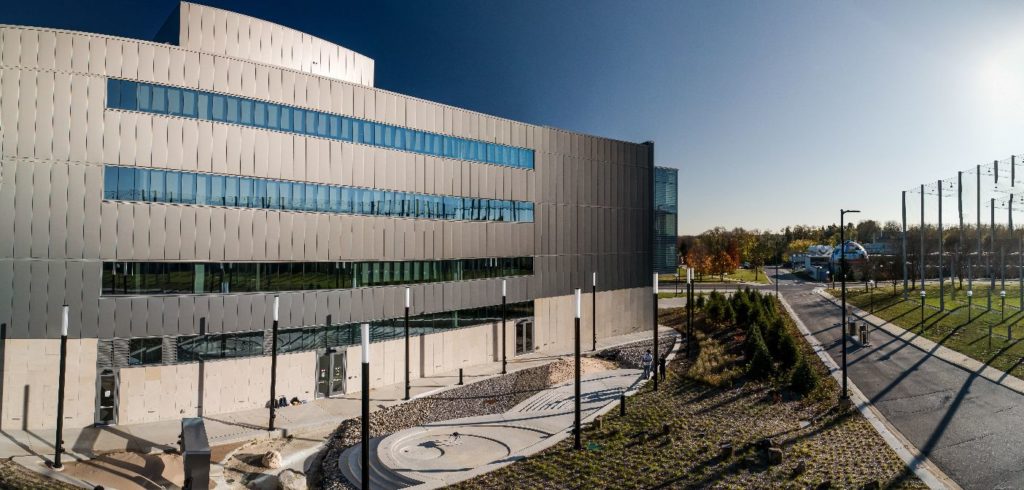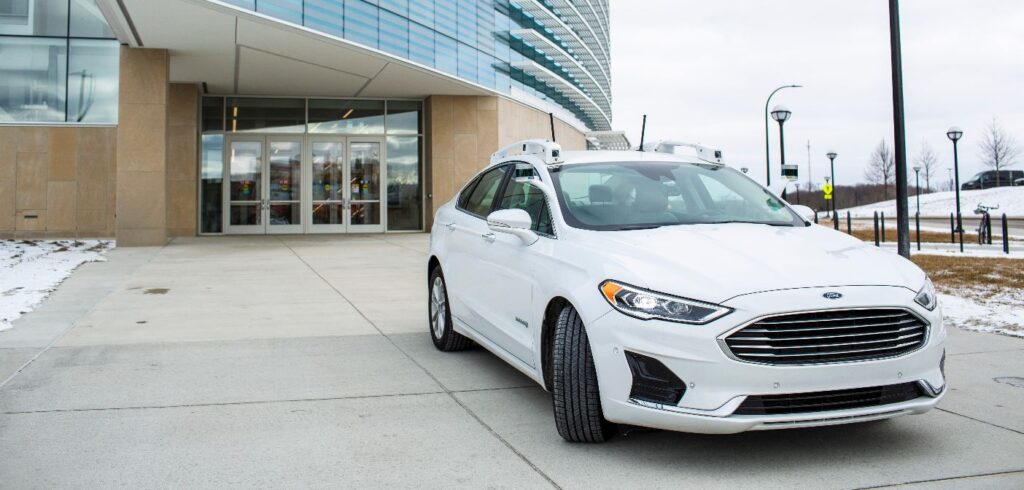Autonomous vehicles and their role in the future of cities, as well as the future of moving goods, are among the areas to be researched at a “one-of-a-kind” R&D facility to be opened by Ford Motor Company and the University of Michigan.
Designed to accelerate advanced, more equitable robotics and mobility, U-M’s Ford Motor Company Robotics Building, designed by HED, is a four-storey, US$75m (£54m), 134,000ft2 complex situated on the north campus.
As the new hub of the U-M Robotics Institute, its first three floors hold custom U-M research labs for robots that fly, walk, roll and augment the human body – as well as classrooms, offices and makerspaces.
The fourth floor houses Ford’s first robotics and mobility research lab on a university campus, as well as 100 Ford researchers and engineers, bringing together U-M researchers from 23 different buildings and 10 top-10 programmes.

With the new infrastructure, Ford engineers will explore how their upright Digit robots can work in human spaces while taking autonomous vehicles from robotic computer simulations to on-road testing at U-M’s Mcity proving ground.
According to Ford, the U-M Robotics Institute aims to advance human-centered robots – machines and systems that interact with people and move through society’s spaces, extending the human body and the process of human cognition.
New labs enabling this include a high-bay garage space for self-driving cars, located nearby the Mcity test facility, for evaluating connected and automated vehicles in simulated urban and suburban environments; and a three-storey fly zone to test drones and other autonomous aerial vehicles indoors, before moving to the adjacent outdoor M-Air research facility.
Ford said the facility is key to the company’s “transformed and modernised research and product development processes aimed at disrupting the transportation landscape”. Key research will focus on self-driving vehicles and their role in the future of cities, as well as the future of moving goods more efficiently, as the pandemic further fuels online retail growth.
Members of Ford’s autonomous vehicle team will work at the new facility, which incorporates purpose-built vehicles into a comprehensive and integrated autonomous vehicle operating system designed to enable choice, convenience and value for the movement of both people and goods.

“Autonomous vehicles have the opportunity to change the future of transportation and the way we move,” said Tony Lockwood, technical manager, autonomous vehicle research, Ford Motor Company.
“As this new technology rolls out, having our Ford team working on campus collaborating with the academic world will help us shorten the time it takes to move research projects to automotive engineering, unlocking the potential of autonomous vehicles.”
The Ford Robotics Building anchors the west end of the Michigan Avenue mobility testbed that begins in Detroit’s Corktown neighborhood and runs through Dearborn to Ann Arbor, where Ford and U-M are teaming with other organisations to experiment with potential mobility solutions for the future.
In collaboration with the state of Michigan and others, Ford and U-M are involved in developing a first-of-its-kind corridor for connected and autonomous vehicles that will continue the state’s mission to lead the development of smart infrastructure and future mobility.
A key goal of the initiative is to close long-standing gaps in access to public transit and transportation across southeast Michigan.




